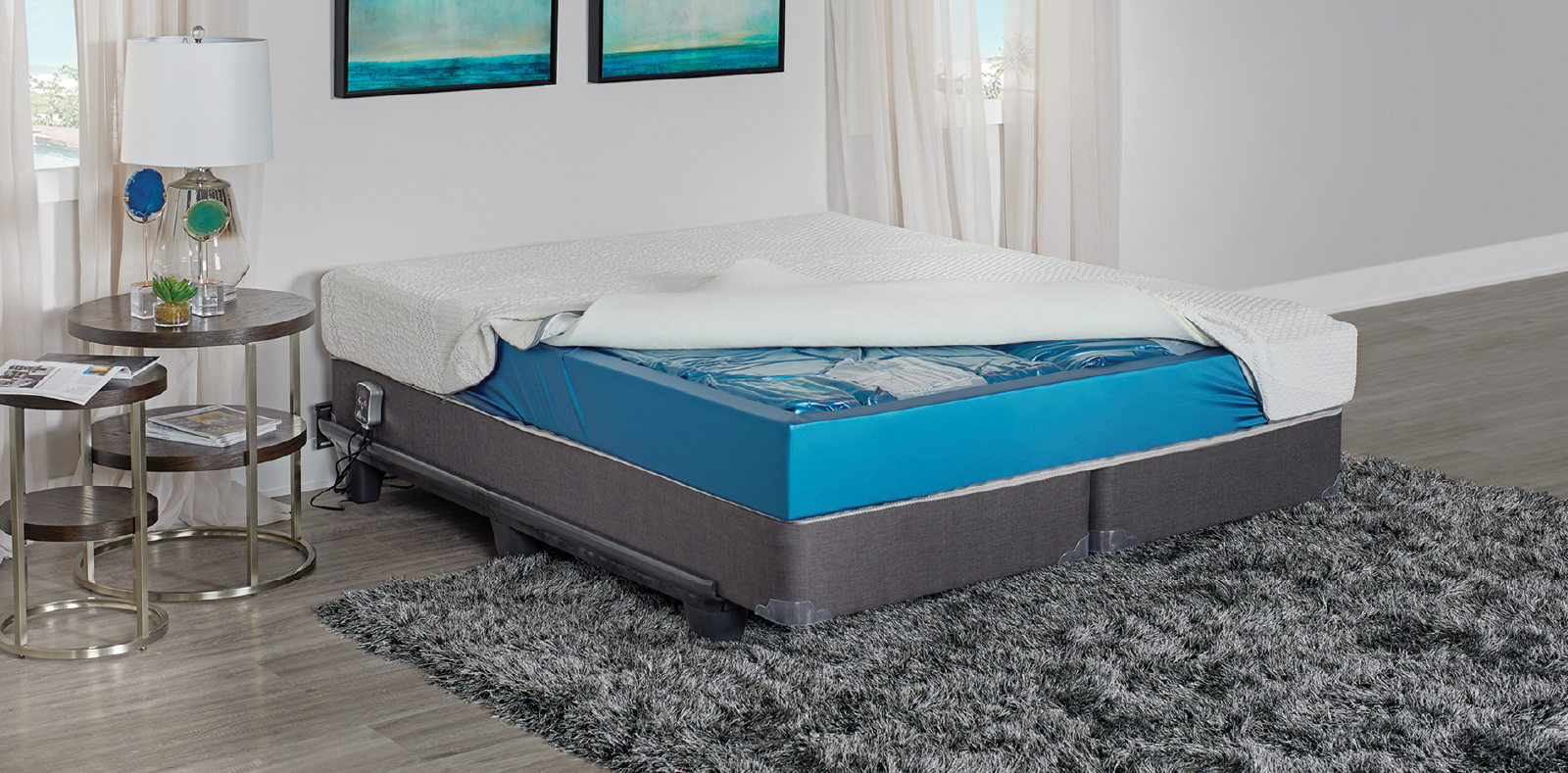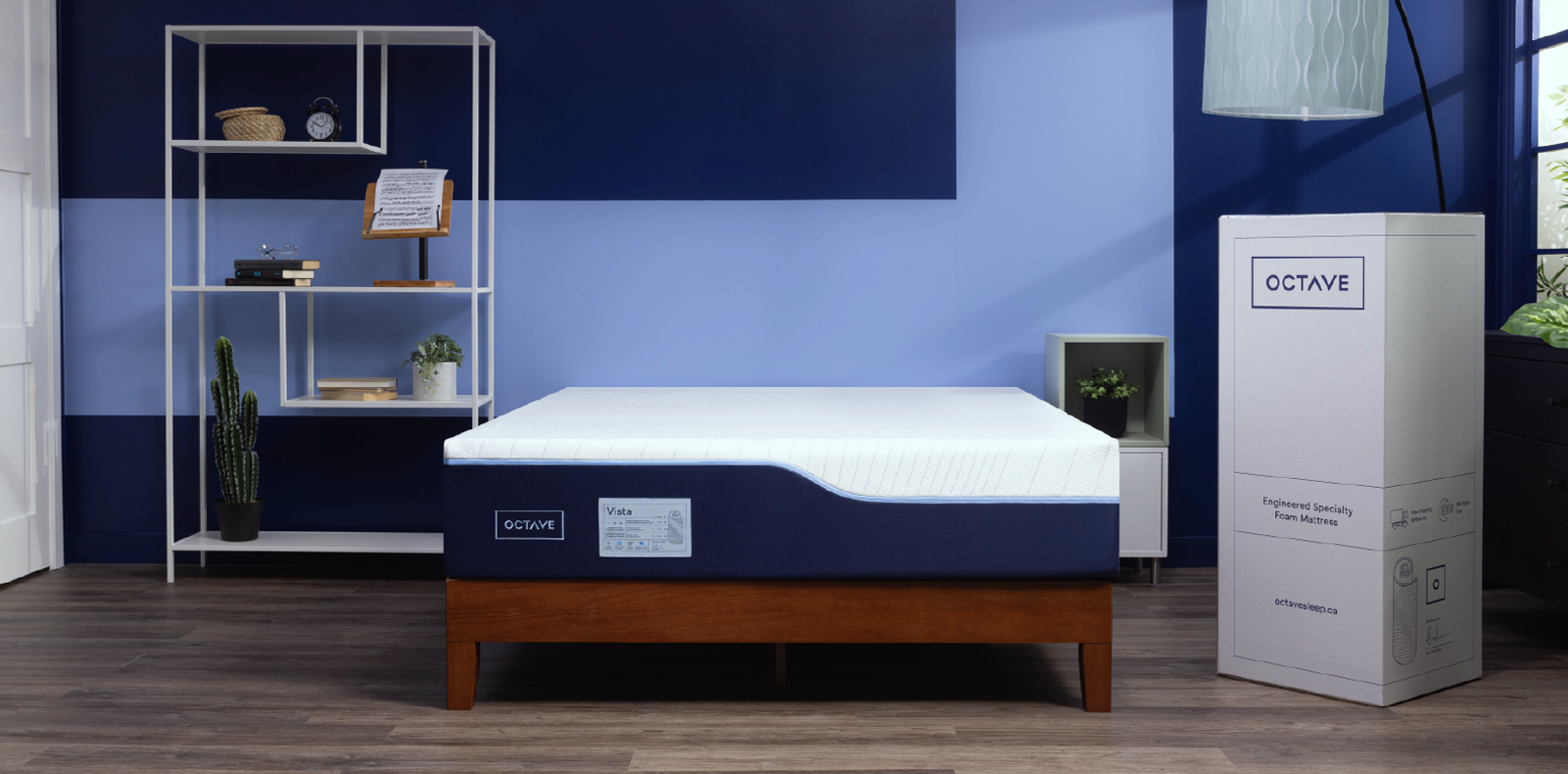What Happened to Waterbeds? (2025)
Updated: March 31, 2025 | Published: September 23, 2024
In the 1970s and 1980s, every cool person had a waterbed—and everyone else wanted one. At the height of their popularity, nearly one out of every four mattresses sold was a waterbed mattress.
Similar to the decline of shoulder pads and car phones, waterbed’s popularity waned and sales began to plummet by the 1990s. They were leak-prone, banned from most rental properties, and required lots of maintenance.
Maintaining a waterbed required a significant amount of time and was quite expensive. Sleepers and retailers alike began leaning towards high-quality and more convenient options, such as memory foam, latex, and hybrid mattresses.
Read on to learn more about the rise and fall of waterbeds, and find out whether a waterbed might be a good fit for you.
What are waterbeds?
Waterbeds are mattresses filled with water. The water chambers, or bladders, are either one large pouch or a series of small tubes protected by a vinyl mattress cover.
They can either be hard sided or soft sided. The difference depends on whether they have a hard external frame. Hard-sided waterbeds come inside wooden frames for support. In contrast, soft-sided waterbeds resemble conventional mattresses and have enough structural support so they can fit on any bed frame.

Who invented the waterbed?
Some scholars believe waterbeds date back to 3600 BCE, when Persians filled goat-skinned mattresses with water warmed by the sun. The modern-day waterbed was invented by Charles Hall, who submitted a prototype for his master’s thesis project while attending San Francisco State University in 1968.
Do they still make waterbeds?
Yes, only a limited number of manufacturers still produce waterbeds. However, it’s far more difficult to find a waterbed manufacturer today, compared to the many options available in the ’70s and ’80s.

Can you still buy waterbeds?
Yes, you can still buy a waterbed, but the vast majority of mattress retailers no longer sell them. You may have to buy your waterbed online or at a specialty store, rather than through a typical mattress store.
Are waterbeds a good idea?
It depends on your sleep needs, budget, and ability to embrace the ongoing maintenance that’s required.
In the 1970s and 80s, waterbeds were popular for their ability to provide plenty of body contouring that felt more more natural and comfortable than traditional innerspring mattresses. At the time, they appeared to be affordable, but it became evident that they had significant drawbacks:
- Bad motion isolation. If you’re a light sleeper or sleep with a partner, you’ll want to consider another mattress option. The water inside the bed will slosh around, so your partner’s movements will be felt when they’re shifting sleeping positions or getting out of bed.
- Poor edge support. Waterbeds are notorious for not providing enough edge support. This makes it difficult to sit on the edge of the bed, which isn’t ideal for anyone with mobility issues.
- Limited availability. Today, only a select few manufacturers still make waterbeds, and even fewer retailers sell them. Although soft-sided waterbeds use standard sheet sizes, you’ll need to purchase specialty sheets and bedding accessories for hard-sided waterbeds. Hard-sided water beds require larger sheet sets. These specialty sheets and accessories are also expensive and challenging to find.
- Expensive to fill and maintain. Installing a waterbed involves running a hose into your bedroom to fill the mattress with up to 200 gallons of water, which could easily contribute to a hefty water bill. You’ll also need special equipment for maintenance and repairs, which can be expensive and challenging to obtain.
- Maintenance challenges. It’s recommended that you inspect your waterbed regularly to check for any signs of wear and tear. You should use vinyl cleaner to wipe the surface of the mattress and completely drain it to clean the inside with waterbed conditioner.
- Mold risks. If your waterbed leaks onto your carpet or rug, it can lead to mold and mildew growth. Mildew can also form inside the mattress itself, making it unsafe to sleep on. To prevent mold and mildew growth, you’ll need to completely drain your waterbed and wash the inside with waterbed conditioner.
- Hard to move. Waterbeds can weigh over 2,000 lb, compared to the average weight of around 150 lb for a regular mattress. This makes them nearly impossible to move without draining them if you want to rearrange your bedroom—a risky process that could easily flood your room and other parts of your home.
For those who love the idea of comfort and targeted pressure-point relief without the hassle, a memory foam mattress like Octave could be a better choice. Octave mattresses have better edge support and motion isolation than waterbeds, making them ideal for couples or restless sleepers who want undisturbed, high-quality sleep. They’re also much more affordable—and there’s no need for specialty bedding or maintenance tools.
Are waterbeds good for your back?
Waterbeds can be good for relieving pressure points and providing a floating sensation that distributes weight evenly and reduces stress. It’s important to have the right water level for proper spine alignment.
However, waterbeds have drawbacks. They can transfer motion, making it difficult for light sleepers when their partner moves. Consider these factors when deciding if a waterbed is best for your back and overall sleep needs.

Are waterbeds good for sex?
Despite being status symbols associated with “sexy” individuals like rockstars, movie stars, and spies, waterbeds aren’t great for sex. They lack the bounce and responsiveness most people prefer, and the constant movement of water can make it hard to stay balanced. They also lack solid edge support, making getting in and out of bed or sitting on the edge challenging.
For a mattress that provides better support and stability, check out our guide to the best mattresses for sex.
Are waterbeds illegal in Canada?
No, they aren’t illegal. That said, most rentals or multi-family buildings strongly discourage or have banned waterbeds. This type of mattress is prone to leaks and difficult to maintain, which can do a lot of damage to any residence, given that they’re leak-prone and difficult to maintain.
Instead, we suggest that you consider a Canadian mattress brand like Octave. Not only does Octave come with a generous 365-night sleep trial and a 15-year mattress warranty, but it also features a layer of multi-zone support foam to offer ergonomic support throughout the night, targeted pressure relief and excellent edge support compared to a waterbed.

Should you buy a waterbed?
Waterbeds might have been popular in the past, but they’re hard to find today due to their limited availability. While they once offered unique comfort and pressure relief, their numerous drawbacks—including maintenance and durability issues—have made them a less practical choice for most sleepers.
If you need a comfortable, supportive mattress without the hassle of finding and maintaining a waterbed, consider Octave instead. With its contouring, high-density memory foam layers, superior pressure-relieving features, better edge support, and motion isolation, Octave provides the comfort and support you need at a more affordable price—no water required.
Our goal is to provide the information you need to find the mattress that’s right for you. Get started with some of our most popular mattress shopping resources:
- Best Mattress Guides: Best Mattress Canada, Best Mattress In a Box
- Reviews: Douglas Original, Logan & Cove Choice, Juno, Octave Vista
- Comparisons: Douglas vs Endy, Douglas vs Casper
We use independent, third-party engineering firms (commissioned by us) with the APEGA stamp of approval to conduct mattress testing on our behalf, using publicly available data. We review and test all mattresses on 40+ criteria we think are important to you, including price, country of manufacture, sleep trial, warranty, features, materials used, motion isolation and edge support ratings, customer satisfaction reviews, returns, and refunds.



